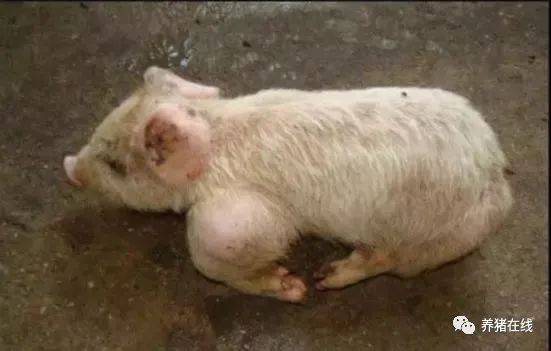Prevention and treatment of common pig gastric ulcer in large-scale pig farm
Pig gastric ulcer is one of the most common diseases in pigs, and it is also common in large-scale pig farms. Most of the diseased pigs were found to die from acute gastric bleeding caused by gastric ulcers. This disease is a kind of gastropathy characterized by localized ulcer of stomach and esophagus in pigs. The incidence varies greatly, ranging from about 2% to 5% and as high as 15% to 25%. Most of them occur in fast-growing pigs aged from 3 months to 8 months.
The etiology of the disease is still inconclusive. Primary gastric ulcer may be related to feed quality, feeding management, environmental hygiene and other factors. Secondary gastric ulcers can be seen in catarrhal ulcers caused by acute and chronic gastric catarrhal processes and inflammatory ulcers caused by gastrointestinal inflammation. The cases of gastric ulcer caused by fungal infection in pigs are high, especially in piglets, and there are often infectious diseases and parasitic diseases such as blood spear nematode disease, mucous membrane disease, foot-and-mouth disease, blister disease, acne disease, pig dentate stomach worm and so on.

Clinical symptoms of this disease usually have no obvious clinical symptoms, it is not easy to find before death, except for acute death, it is generally found during slaughtering. It can occur in pigs of any age, but shelf pigs are common. Some sick pigs show indigestion, and sometimes show depression, anorexia, weakness, vomiting, abdominal pain, and even visible mucous membrane is obviously pale, anemia, feces are black paste. Some healthy pigs may die suddenly because of internal bleeding after exercise or excitement. The body is extremely pale and extensive bleeding in the stomach can be seen by autopsy. In most cases, gastrointestinal erosion and ulcers can be seen only during postmortem examination or slaughter.
It is difficult to diagnose this disease before death. According to the black stool, pale body showed bloody anemia; acute death, autopsy can be seen gastric mucosal bleeding, erosion, necrosis and ulcer, can make a diagnosis.
Prevention and cure
Antihistamines such as diphenhydramine, chlorpheniramine and formonitrile can be used to eliminate allergic reactions; oil laxatives and weak disinfectants are available for gastrointestinal cleaning, antiseptic and antiseptic; artificial salts and mothers are available for stomach and digestion; protective agents and astringents are available for the protection of gastrointestinal mucosa, such as synthetic aluminum silicate, bismuth subnitrite, magnesium oxide, magnesium silicate; bromine and 2.5% chlorpromazine hydrochloride are available for sedation and analgesia. To prevent ulcer bleeding, tannic acid, vitamin K, calcium chloride, 1% fruit red, if necessary, blood transfusion; appropriate use of antibiotics or sulfonamides to prevent infection.
To prevent, it is necessary to reduce the feeding of irritating, rotten and indigestible feed, provide easily digestible feed, don't grind it too fine, keep it in a dry place, don't get moldy, don't add too much copper in feed, and the content of selenium and vitamin E should be sufficient. To create a good environment and reduce the existence of stress factors.
- Prev

What disease is swollen pig joint, how to prevent and cure effectively?
What disease is swollen pig joint, how to prevent and cure effectively?
- Next

What are the symptoms of porcine contagious pleuropneumonia? How to treat it?
What are the symptoms of porcine contagious pleuropneumonia? How to treat it?
Related
- On the eggshell is a badge full of pride. British Poultry Egg Market and Consumer observation
- British study: 72% of Britons are willing to buy native eggs raised by insects
- Guidelines for friendly egg production revised the increase of space in chicken sheds can not be forced to change feathers and lay eggs.
- Risk of delay in customs clearance Australia suspends lobster exports to China
- Pig semen-the Vector of virus Transmission (4)
- Pig semen-the Vector of virus Transmission (3)
- Five common causes of difficult control of classical swine fever in clinic and their countermeasures
- Foot-and-mouth disease is the most effective way to prevent it!
- PED is the number one killer of piglets and has to be guarded against in autumn and winter.
- What is "yellow fat pig"? Have you ever heard the pig collector talk about "yellow fat pig"?

